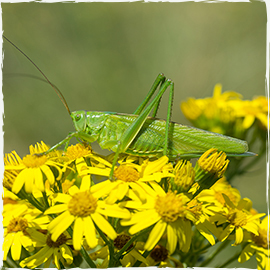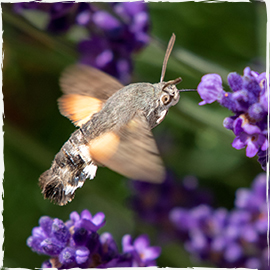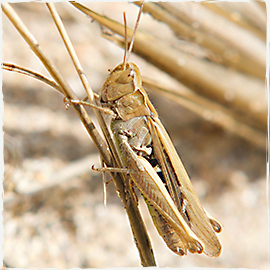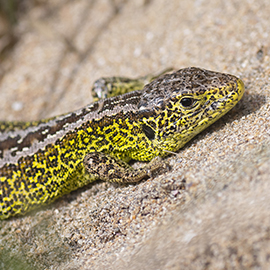Insects & Reptiles
These are just a few of the smaller species of insects and reptiles that you might spot when you are exploring around the area and further afield.

Great Green Bush Cricket
The Great Green Bush-Cricket is one of our largest crickets in the UK at 7 cm long. They are quite hard to spot because they are so camouflaged but can be located by the display sound the male creates from rubbing his forewings together. He produces a very loud noise which sounds like a sewing machine going continuously for long periods. Their preferred habitat is scrubland and brambles so keep your eyes peeled when you are out and about exploring.
When to see: May to October

Hummingbird Hawkmoth
The Hummingbird Hawkmoth is a day-flying moth and has known to be mistaken to be a hummingbird hovering amongst the flowers. The darting movement from one flower to the next with the long proboscis uncoiled completes the illusion of a hummingbird. One of its favourite food plants is Red Valerian which can be found in the hedgerows and road verges all over the Trevose Headland. Like butterflies the Hummingbird Hawkmoth prefers to fly in bright sunlight and has a wingspan of 50-58 mm.
When to see: May to September

Common Field Grasshopper
You know that summer has arrived when you hear the sound of male Common Field Grasshoppers rubbing their legs against their wings. Brownish in colour but can vary depending on the habitat where you spot one, striped and mottled forms occur with parts of the body varying from buff through orange to purple. You never know where you might come across one but keep a look out on the sand dunes on Constantine Bay.
When to see: June until late autumn

Sand Lizard
The Sand Lizard is one of the UK’s rarest reptiles and can be found basking in the sunshine on the Trevose Headland, mainly in amongst the heathland but they also like the warmth of sand dunes. They prefer unshaded heather that is interspersed with open bare ground and they are found on predominantly south facing slopes. The Sand Lizard can be easily mistaken for the Common Lizard but the males in the breeding season have bright green-yellow flanks. They can reach up to 20 cm in length.
When to see: May to October
All photographs © Adrian Langdon and Helen Llewelyn

